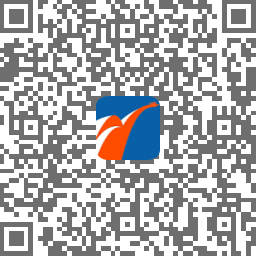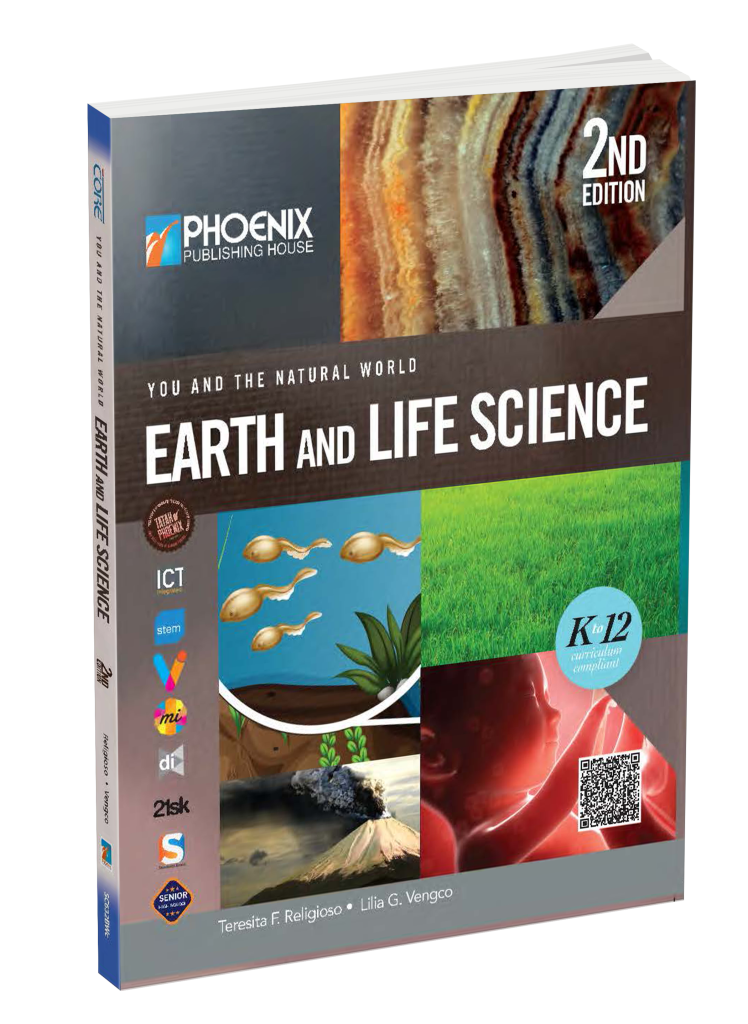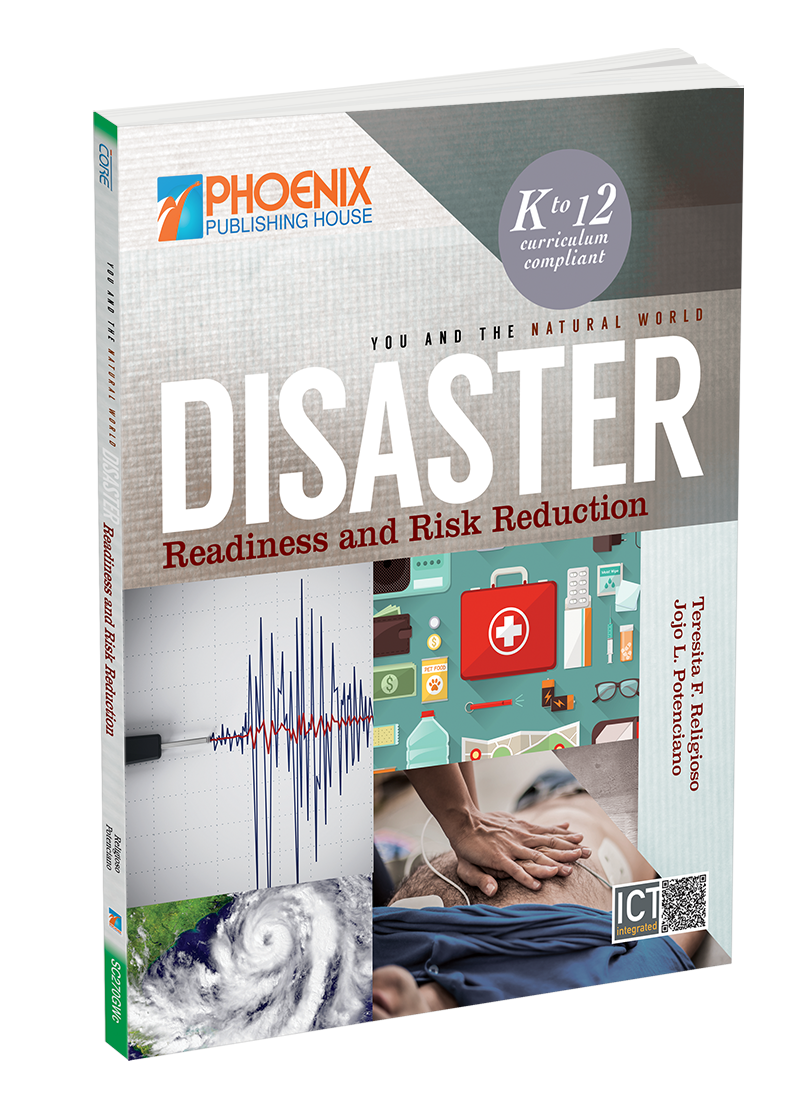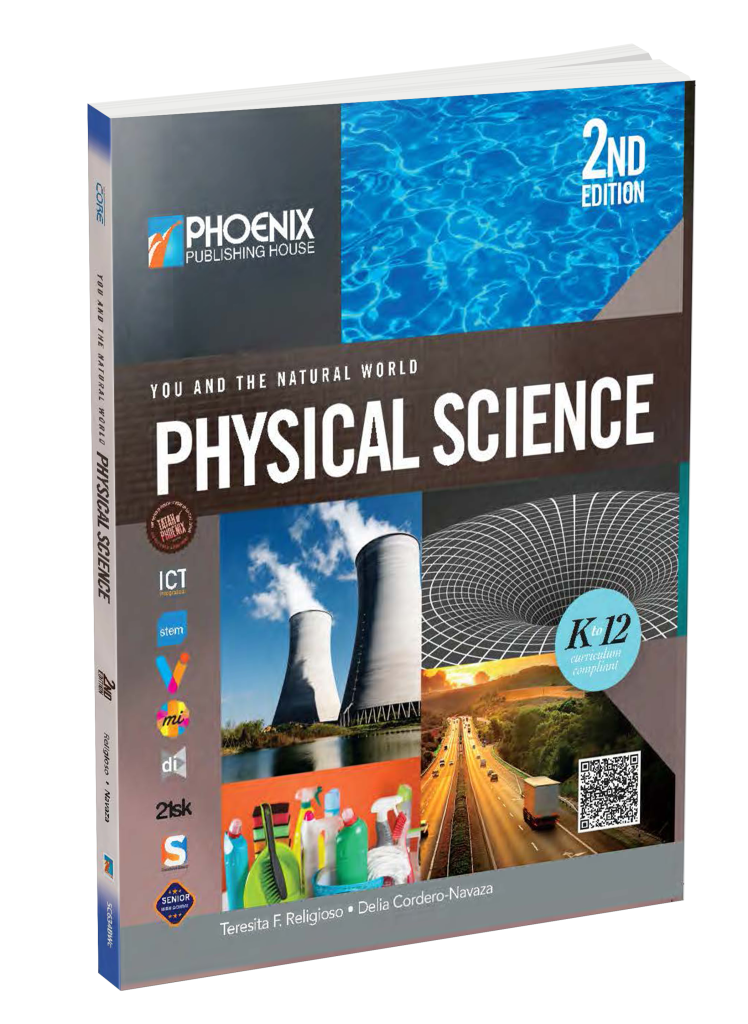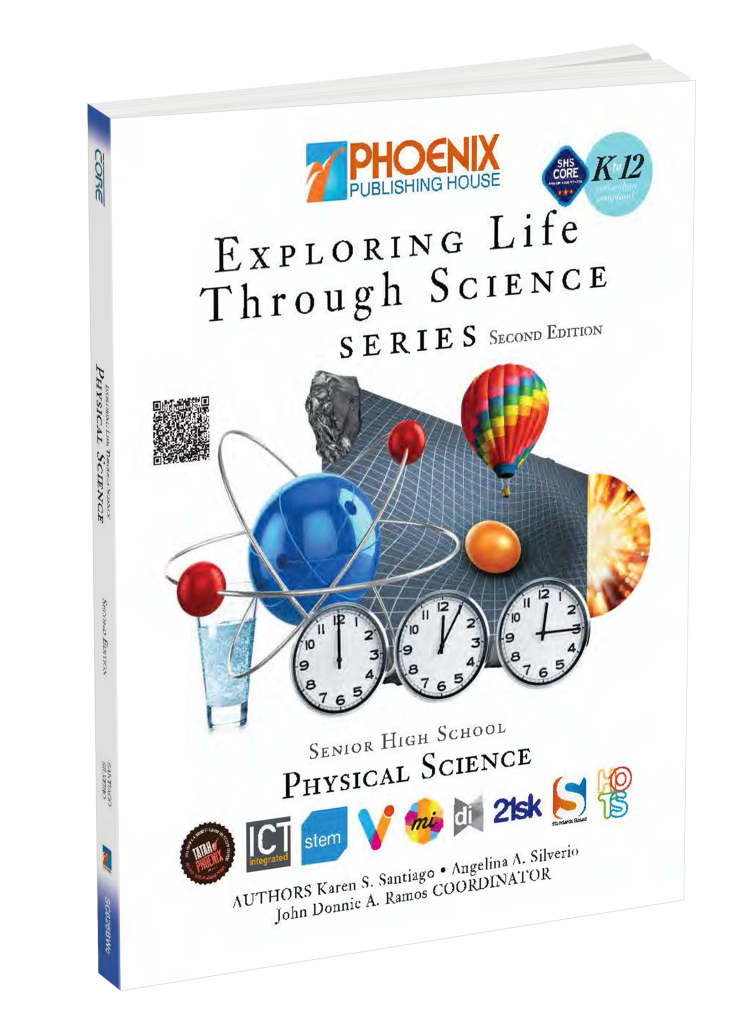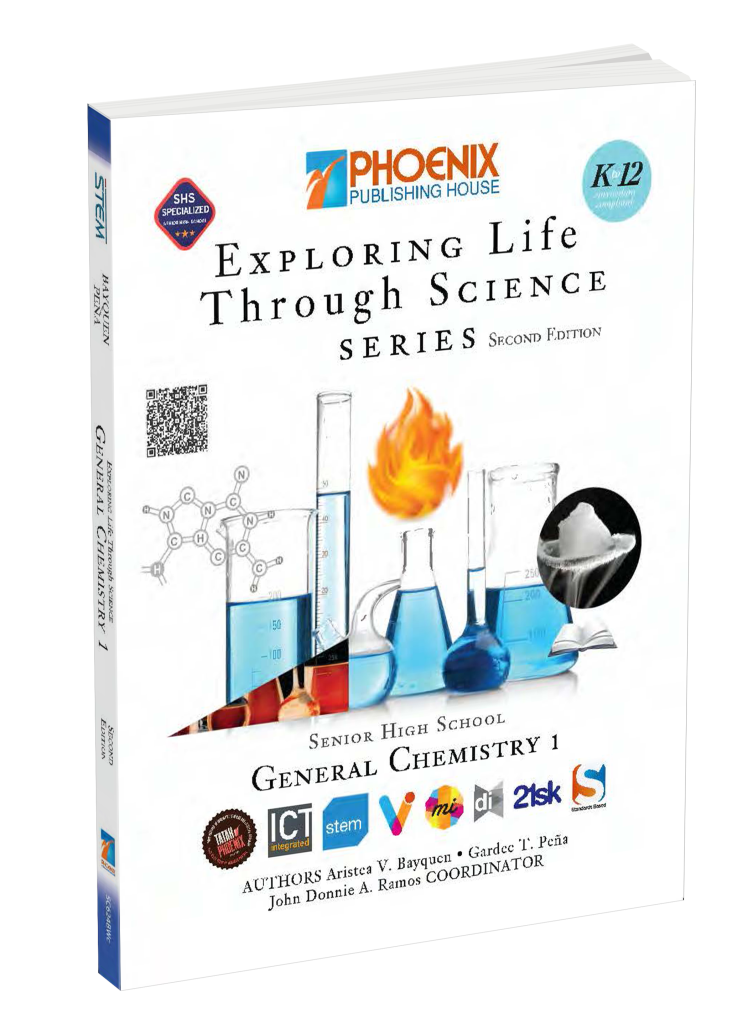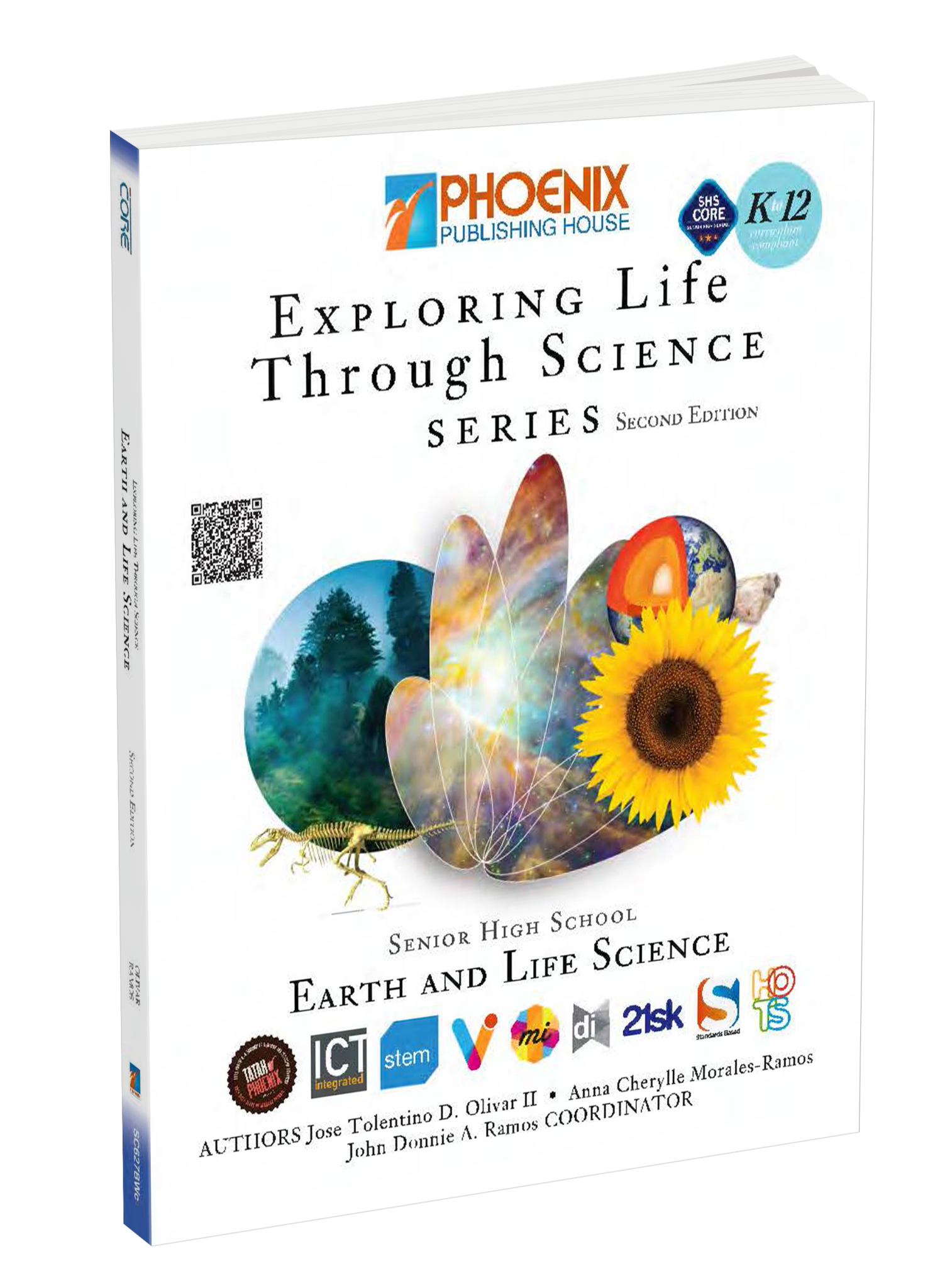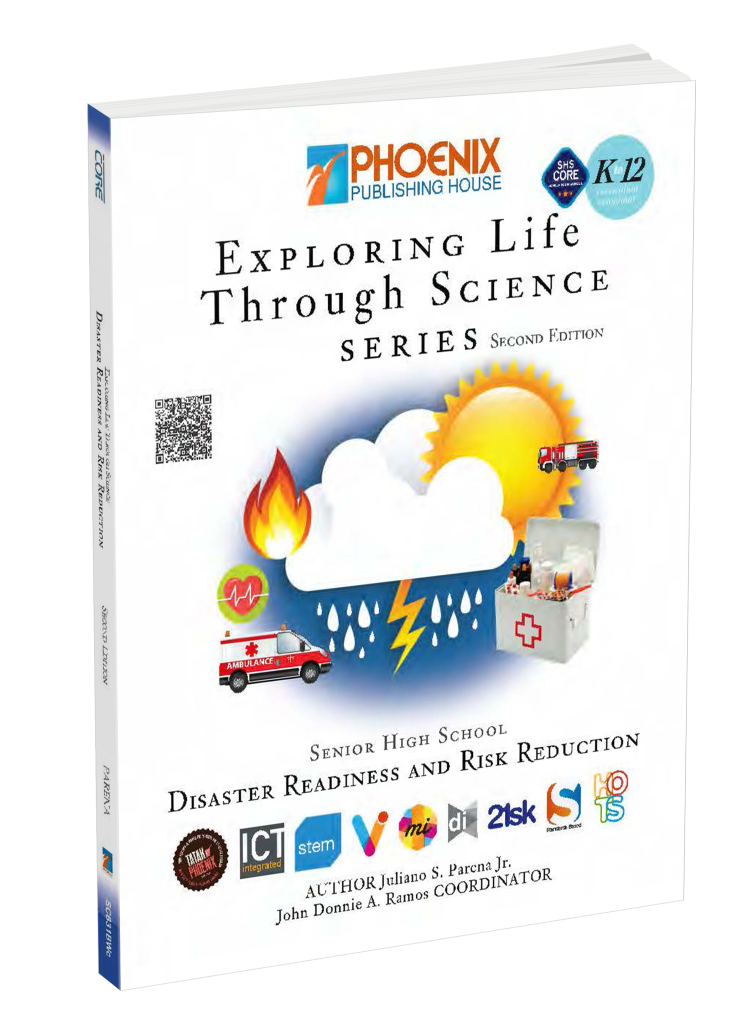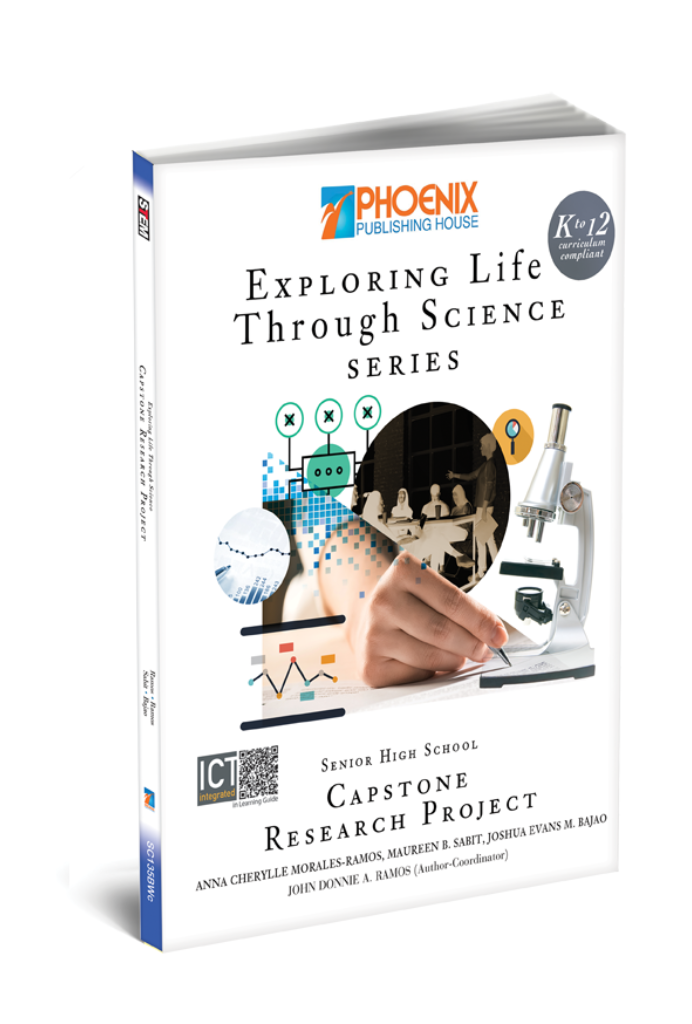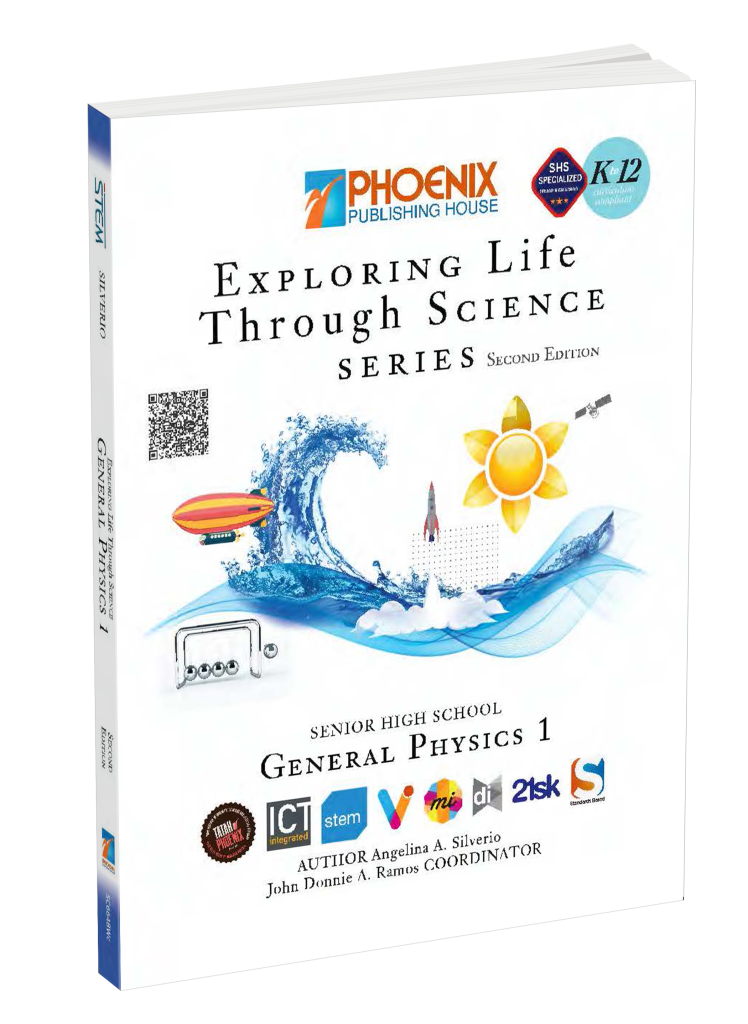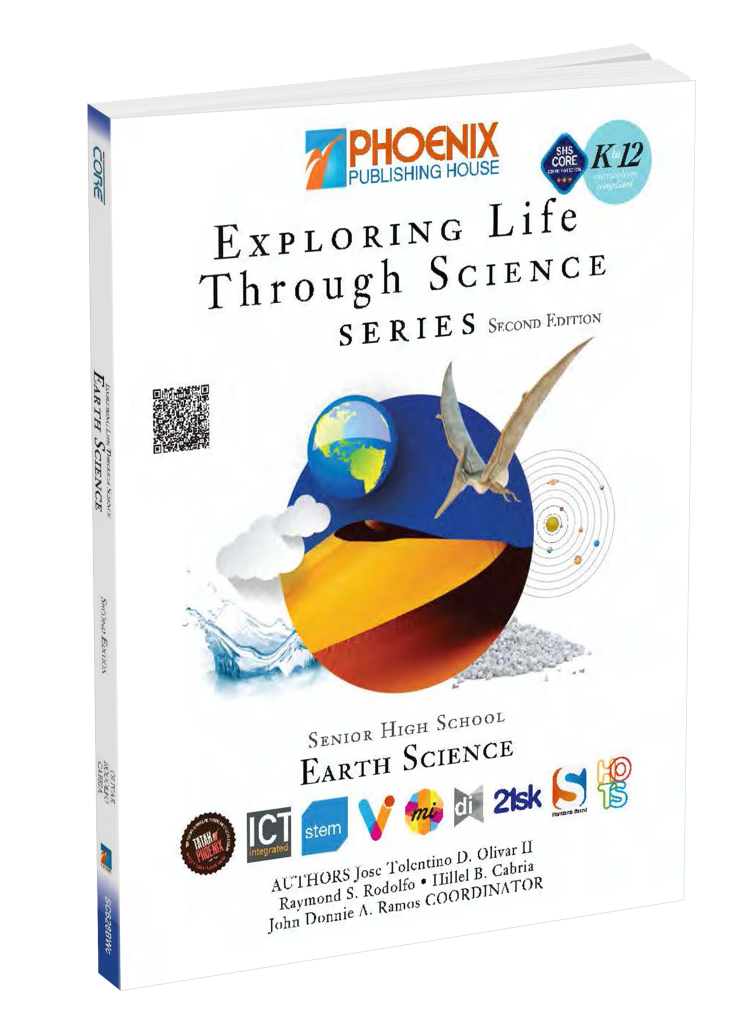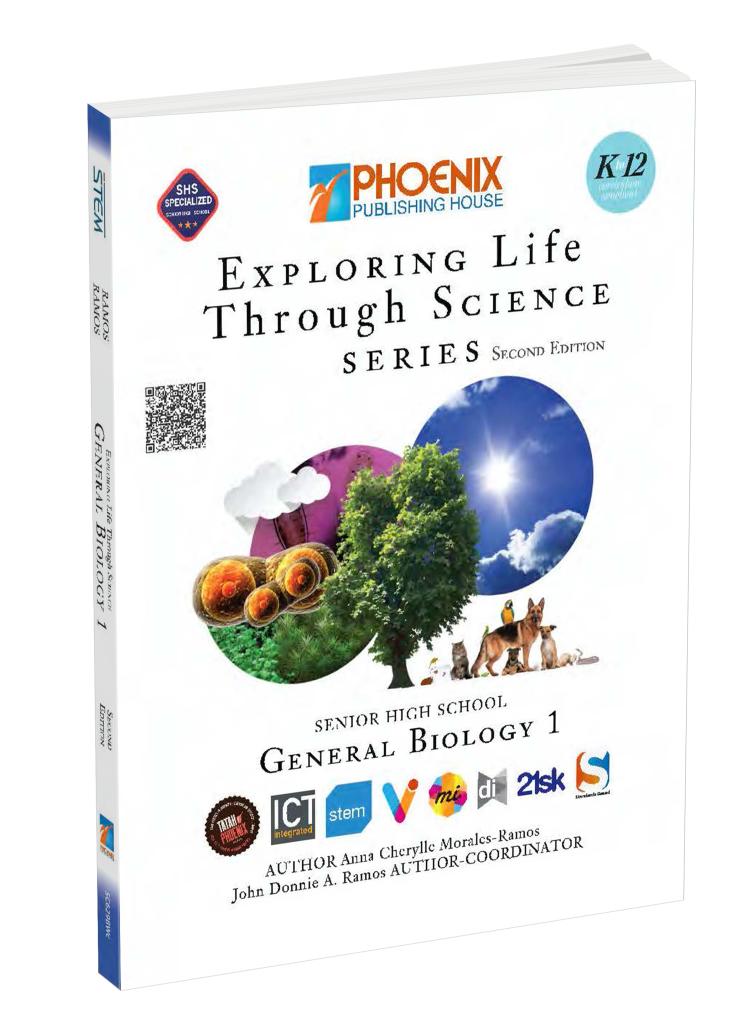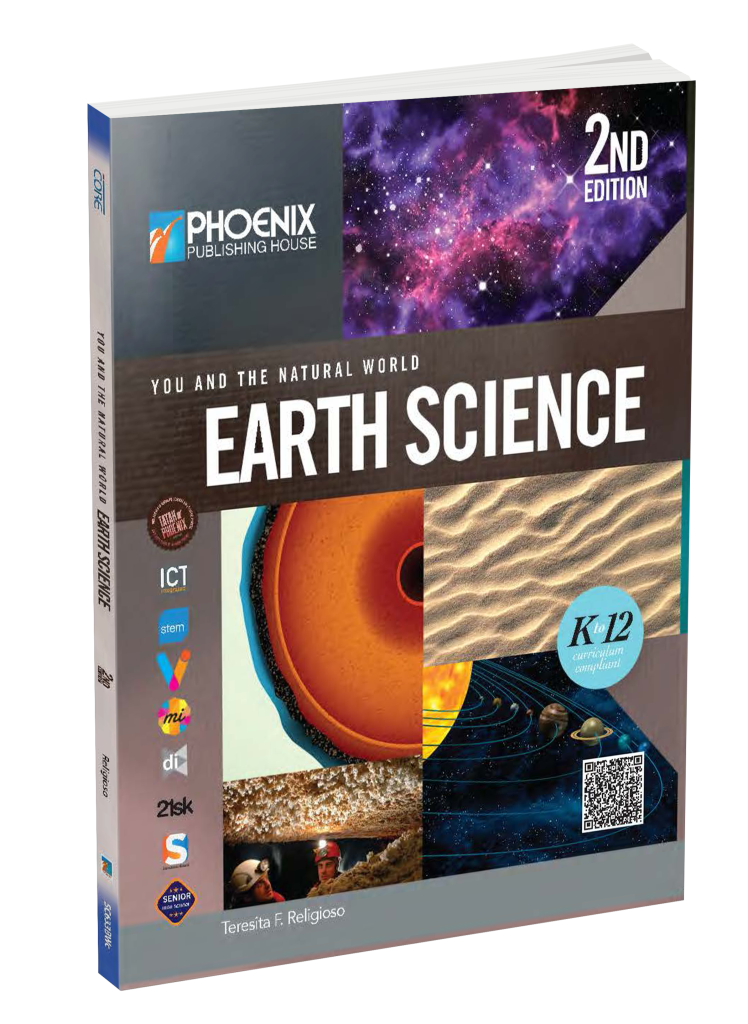
You and the Natural World Earth Science
You and the Natural World Earth Science provides meaningful and engaging experiences to allow learners demonstrate basic understanding of Earth and its processes. It presents the history of the Earth through geologic time as a continuous event.
YNW Earth Science discusses Earth’s processes both internal and external and how these change Earth. The book highlights issues and concerns related to natural processes and human activities in the use of Earth’s resources. It includes Philippine environmental laws that govern the utilization of these resources.
Author/s
Teresita F. Religioso
Level/s
Senior High
Copyright
Worktext: 2022
Learning: 2023
Big Idea – states the core or central idea of the chapter, which stimulates curiosity about the scientific concepts within the chapter
Concept Map – provides a visual guide that shows the relationships among concepts for better understanding of the chapter
Concept Map – provides a visual guide that shows the relationships among concepts for better understanding of the chapter as a whole
Learning Competencies – composed of the K to 12 learning competencies and other objectives which are deemed necessary in the discussion of the chapter
Discover Science – highlights the latest noteworthy discoveries, events, and developments in science
Highlights – provide the content summaries in a concise form, which helps students organize and synthesize data and information from the chapter
Design and Make/Investigation – allows transfer of knowledge through the activities and investigations, promoting participation through investigation
Focus On – provides additional information related to the chapter to enhance knowledge of concepts previously discussed throughout the lesson
Authentic Assessments – in the form of Section Review, which require both factual recall and critical thinking skills, and Chapter Assessments, which include a variety of questions that assess knowledge, process and skills, and understanding and performance, evaluate students’ learning.
Science at Home – features home-based activities that can help the students better understand science concepts
Function Icons:
Quick Response (QR) Code – provides suggested online resources as additional reading materials
Information and Communications Technology (ICT) – emphasizes ICT-related contents and activities
Differentiated Instruction – emphasizes activities that address a wide range of learning needs, abilities, and interests of students
STEM Hands-on problem-based inquiry and exploration activities that challenge students to find solutions to real-world issues and problems as they are guided by the design thinking process
21st Century Skills – identifies the twenty-first century skills developed and nurtured through the activities and information in the book
- Learning Skills (LE): (1) critical thinking, (2) creativity, (3) collaboration, (4) communication
- Literacy Skills (LE): (1) information, (2) media, (3) technology
- Life Skills (LE): (1) flexibility, (2) leadership, (3) initiative, (4) productivity, (5) social skills
Other Books
Building Learner Resilience with MATATAG Curriculum – Compliant Solutions

